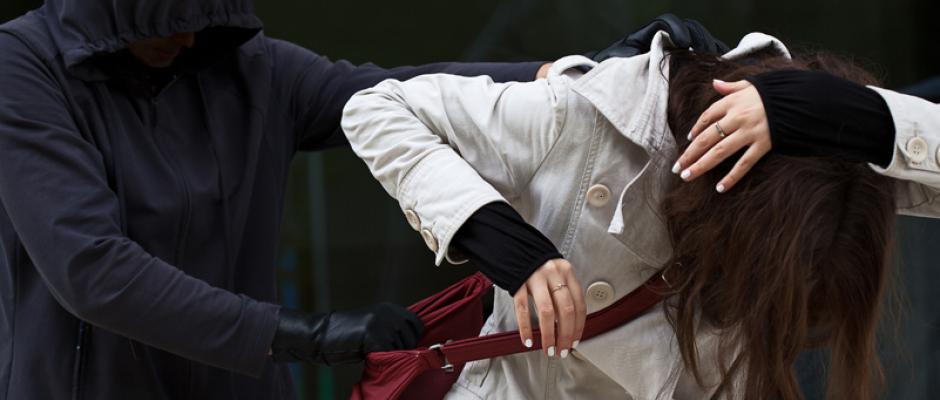Analysis of the gap between self-defence and contemporary street attacks
Self-defence is often presented as an effective way of protecting yourself against aggression. Many clubs, disciplines and instructors offer training that is supposed to enable anyone to deal with a physical threat. However, when the realities of street attacks are analysed, a clear discrepancy emerges between the techniques taught and the way in which violence occurs in real situations.
PERSONAL DEFENCE
Jean Bourdin, Founder of Pericology
3/18/20253 min read


Self-defence is often seen as a practical solution for protecting yourself in a violent confrontation. However, in a context where street assaults are changing in nature, frequency and method, there is sometimes a significant gap between the techniques taught in self-defence classes and the realities faced by individuals in real life. This analysis explores this discrepancy, drawing on the objectives of studies and observations.
1. Self-defence : an approach based on general principles
Traditional self-defence is often based on principles derived from martial disciplines or structured systems, such as krav maga, karate, judo or aikido. The main aim of these practices is to prepare a person to react to a direct attack (punches, kicks, grabs) using standardised, repetitive techniques. They also focus on psychological aspects such as stress management and self-confidence.
However, these methods have often been developed in controlled environments or historically linked to specific conflicts. For example, krav maga, created for the Israeli armed forces, was originally designed to respond to military or police situations, rather than modern urban altercations. Similarly, certain karate techniques may seem inappropriate in scenarios involving bladed weapons or multiple attackers.
2. Street assaults today : a complex reality
Street assaults do not always follow predictable patterns. According to data compiled by various criminal and sociological organisations, several trends mark contemporary violent confrontations :
Increasing use of weapons : Contrary to popular belief, hand-to-hand fights are less frequent than they used to be. Today, bladed weapons (knives, scissors, etc.) or improvised weapons (sticks, blunt objects) are often used from the outset of an altercation. A British study carried out in 2021 revealed that almost 40% of urban assaults involved a weapon.
Surprise and rapid attacks : Street assaults are often sudden and brief. A US FBI report indicates that many attacks last less than 30 seconds, making it difficult to mount an effective counter-attack.
Social and psychological context : The motivations behind assaults vary considerably, from opportunistic theft to gratuitous acts of violence. Understanding these dynamics can be crucial in anticipating certain behaviours, but is often beyond the skills taught in conventional self-defence courses.
3. The gap between theory and practice
The gap between traditional self-defence and modern aggression can be seen in a number of ways :
3.1. Weapons preparation
The techniques taught in many self-defence courses do not take sufficient account of the threat posed by weapons. While some schools include simulations with simulated weapons, these are still rare compared to courses that focus solely on unarmed combat.
3.2. Managing complex situations
In a confrontation involving several aggressors or external factors (such as a linked environment), informed responses within a formal framework may prove insufficient. Practitioners must not only control their movements, but also manage their space, identify the rescue issues and quickly assess the risks.
3.3. Adaptability versus rigidity
Many self-defence systems are based on predefined routines, which may lack flexibility in unexpected situations. For example, a technique learnt to neutralise an arm-grab may not work if the attacker frequently changes position or uses a weapon.
4. Towards more appropriate self-defence?
To bridge this gap, several experts are proposing adjustments to the way self-defence is taught:
Integration of modern technologies and tools : Learning how to use your mobile phone to alert the authorities or capture evidence can be just as important as knowing how to fight.
Simulation of realistic scenarios : Exercises that include surprise attacks, simulated weapons and a variety of environments allow practitioners to better prepare their instinctive reaction.
Holistic training : Beyond physical techniques, it is essential to train individuals in vigilance, verbal communication and conflict avoidance. A study published in The Journal of Applied Security Research points out that up to 70% of assaults can be avoided through good body posture and an assertive attitude.
5. Conclusion
While self-defence remains a valuable skill, it is crucial to recognise its limitations in the face of the challenges posed by modern street assaults. By integrating practical, technological and psychological elements, self-defence programmes could better prepare individuals to deal with real-life situations. However, it is also important to remember that the best form of self-defence often remains the avoidance of danger and the search for peaceful solutions.
In short, the key lies in constantly adapting teaching methods to keep pace with changes in contemporary threats.
Source : Office for National Statistics (Royaume-Uni), « Enquête sur la criminalité en Angleterre et au Pays de Galles », 2021.
Source : Fisher, BS, et al. (2018). « Prévention par la sensibilisation : le rôle de la formation à l'autodéfense dans la réduction de la victimisation. »
Source : Kotter, JP, & Cohen, DS (2019). « Techniques d'autodéfense : contexte historique et applications modernes. » Journal of Martial Arts Studies.
Jean Bourdin, Founder of Péricologie 2025, © all rights reserved
#Péricology #Self-defence #StreetAttacks #PersonalProtection #TacticalDefence #SituationalAwareness #DefensiveTactics #UrbanSurvival #CombatTraining #SafetyStrategy #ProtectiveSkills #ModernStreetFights #Risk analysis #PersonalSafety #DefenceGap #StreetCrime #StreetSelf-Defence #TacticalAwareness #DefensiveMindset #SurvivalSkills #Self-defence training
For enthusiasts
Our links
Message
© 2025. All rights reserved. By Pericology
